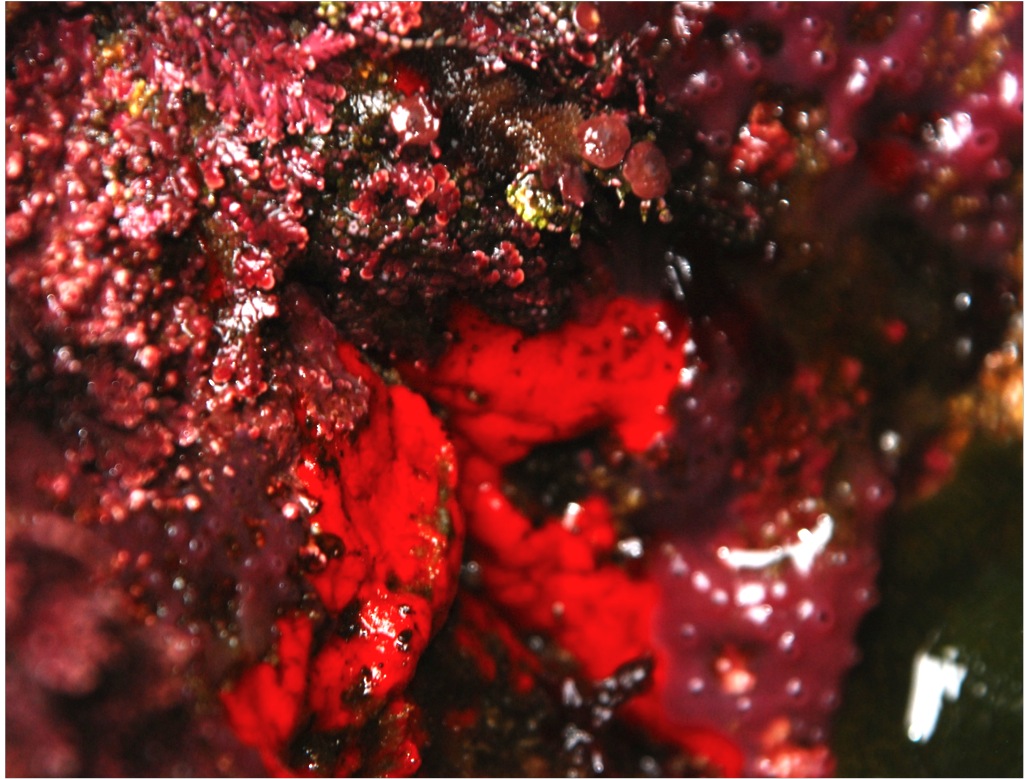Red velvet sponge, velvety red sponge • Clathria pennata, Clathria (Microciona) pennata, Ophlitaspongia pennata
Identification
The red velvet sponge forms a thin, smooth crust to a thickness of 6 mm. Each patch of crust can be up to 1 m wide. It varies in colour from a rich, vibrant red to coral, red-brown, or mustard.
Habitat & Range
This sponge is found from the intertidal down to 90 m in the subtidal throughout the Pacific Northwest.
Similar Species
Axocielita originalis is very similar to Ophlitaspongia pennata. The two are impossible to tell apart in the field, whether underwater or on the beach. The two species have slight differences in their spicules. However its presence has not been confirmed north of Washington State.
Intriguing Info
Red velvet sponges are rarely found without one or two red sponge nudibranchs (Rostanga pulchra) nearby. This nudibranch species feeds on the sponge, and matches the vibrant red colour exactly.
iNaturalist
https://www.inaturalist.org/taxa/63672-Clathria-pennata
The red velvet sponge forms a thin, smooth crust to a thickness of 6 mm. Each patch of crust can be up to 1 m wide. It varies in colour from a rich, vibrant red to coral, red-brown, or mustard.
Habitat & Range
This sponge is found from the intertidal down to 90 m in the subtidal throughout the Pacific Northwest.
Similar Species
Axocielita originalis is very similar to Ophlitaspongia pennata. The two are impossible to tell apart in the field, whether underwater or on the beach. The two species have slight differences in their spicules. However its presence has not been confirmed north of Washington State.
Intriguing Info
Red velvet sponges are rarely found without one or two red sponge nudibranchs (Rostanga pulchra) nearby. This nudibranch species feeds on the sponge, and matches the vibrant red colour exactly.
iNaturalist
https://www.inaturalist.org/taxa/63672-Clathria-pennata
References
Harbo, R. M. (1999). Whelks to whales: Coastal marine life of the Pacific Northwest. Madeira Park, BC: Harbour Publishing. P. 106.
Lamb, A., and Hanby, B. (2005). Marine Life of the Pacific Northwest [electronic resource]. Madeira Park, BC: Harbour Publishing.
Authors and editors of page
Joel White, Kelly Fretwell, and Brian Starzomski (2014).
Harbo, R. M. (1999). Whelks to whales: Coastal marine life of the Pacific Northwest. Madeira Park, BC: Harbour Publishing. P. 106.
Lamb, A., and Hanby, B. (2005). Marine Life of the Pacific Northwest [electronic resource]. Madeira Park, BC: Harbour Publishing.
Authors and editors of page
Joel White, Kelly Fretwell, and Brian Starzomski (2014).





